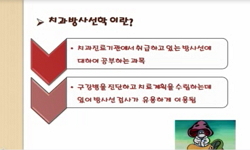Purpose: This study was performed to investigate the incidence and configuration of the bifid mandibular canal in a Korean population by using cone-beam computed tomography (CBCT) imaging. Materials and Methods: CBCT images of 1933 patients (884 male ...
http://chineseinput.net/에서 pinyin(병음)방식으로 중국어를 변환할 수 있습니다.
변환된 중국어를 복사하여 사용하시면 됩니다.
- 中文 을 입력하시려면 zhongwen을 입력하시고 space를누르시면됩니다.
- 北京 을 입력하시려면 beijing을 입력하시고 space를 누르시면 됩니다.


The incidence and configuration of the bifid mandibular canal in Koreans by using cone-beam computed tomography
한글로보기https://www.riss.kr/link?id=A100805735
- 저자
- 발행기관
- 학술지명
- 권호사항
-
발행연도
2014
-
작성언어
English
- 주제어
-
등재정보
SCOPUS,KCI등재,ESCI
-
자료형태
학술저널
- 발행기관 URL
-
수록면
53-60(8쪽)
- 제공처
- 소장기관
-
0
상세조회 -
0
다운로드
부가정보
다국어 초록 (Multilingual Abstract)
Purpose: This study was performed to investigate the incidence and configuration of the bifid mandibular canal in a Korean population by using cone-beam computed tomography (CBCT) imaging. Materials and Methods: CBCT images of 1933 patients (884 male and 1049 female) were evaluated using PSR-9000N and Alphard-Vega 3030 Dental CT units (Asahi Roentgen Ind. Co., Ltd, Kyoto, Japan). Image analysis was performed by using OnDemand3D software (CyberMed Inc., Seoul, Korea). The bifid mandibular canal was identified and classified into four types, namely, the forward canal, buccolingual canal, dental canal, and retromolar canal. Statistical analysis was performed by using the chi-squared test and one-way analysis of variance (ANOVA). Results: Bifid mandibular canals were observed in 198 (10.2%) of 1933 patients. The most frequently observed type of bifid mandibular canal was the retromolar canal (n=104, rate: 52.5%) without any significant difference among the incidence of each age and gender. The mean diameter of the accessory canal was 1.27 mm (range: 0.27-3.29 mm) without any significant difference among the mean diameter of each type of the bifid mandibular canal. The mean length of the bifid mandibular canals was 14.97mm(range: 2.17-38.8 mm) with only a significant difference between the dental canal and the other types. Conclusion: The bifid mandibular canal is not uncommon in Koreans and has a prevalence of 10.2% as indicated in the present study. It is suggested that a CBCT examination be recommended for detecting a bifid canal.
동일학술지(권/호) 다른 논문
-
Common positioning errors in panoramic radiography: A review
- Korean Academy of Oral and Maxillofacial Radiology
- Rondon, Rafael Henrique Nunes
- 2014
- SCOPUS,KCI등재,ESCI
-
- Korean Academy of Oral and Maxillofacial Radiology
- Shokri, Abbas
- 2014
- SCOPUS,KCI등재,ESCI
-
Use of spherical coordinates to evaluate three-dimensional facial changes after orthognathic surgery
- Korean Academy of Oral and Maxillofacial Radiology
- Yoon, Suk-Ja
- 2014
- SCOPUS,KCI등재,ESCI
-
Conversion coefficients for the estimation of effective dose in cone-beam CT
- Korean Academy of Oral and Maxillofacial Radiology
- Kim, Dong-Soo
- 2014
- SCOPUS,KCI등재,ESCI





 ScienceON
ScienceON




